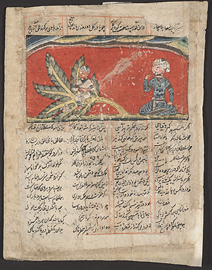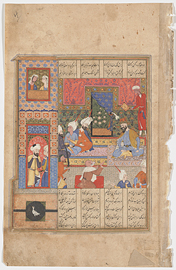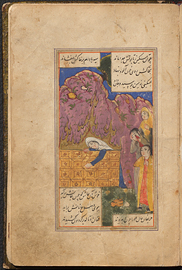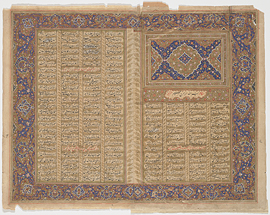Given the centrality of poetry in Persian culture, it is no surprise that scenes from the great epic and lyric poetry collections inspired the production of miniature paintings. The production of both poetry and miniatures—along with countless other arts and intellectual endeavours—flourished side-by-side at princely courts across Iran and Central Asia from the 13th to the 16th century CE. One particularly beloved subject for miniature artists and their noble patrons was the Shāh-nāmah (“Book of Kings”) by the 10th-century epic poet Firdawsī, which recounts the struggles and triumphs of famous kings of the pre-Islamic period. Other favourite sources of inspiration were the poetic Bustān (“Orchard”) and prose Gulistān (“Rose Garden') of Saʿdī, a 13th-century man of letters from the city of Shiraz. Indeed, Saʿdī’s witty and didactic anecdotes and verses have remained popular sources of enlightenment and entertainment down to the present day. Likewise in the 13th century CE, the romantic epic poet Niẓāmī left his mark on the Persian poetic and artistic canons through his Khamsah, five classic tales of love and adventure. In the 15th centurty CE, the Qur’anic and extra-Qur’anic story of the Egyptian noblewoman Zulaykhā and her destructive passion for her slave, the Hebrew Prophet Yūsuf (Joseph), was transformed into an epic poem by the Sufi poet Jāmī and quickly taken up by miniaturists.





